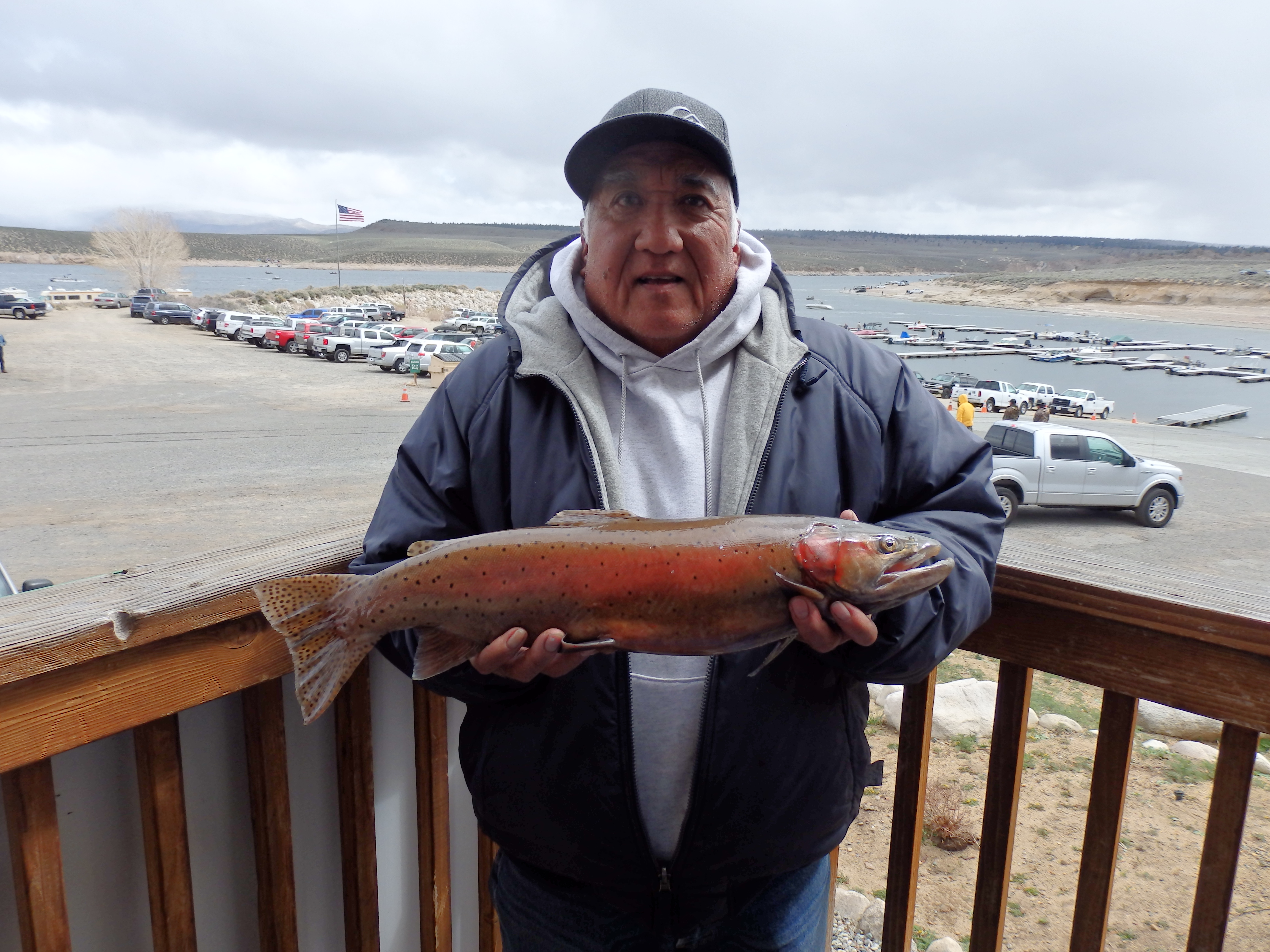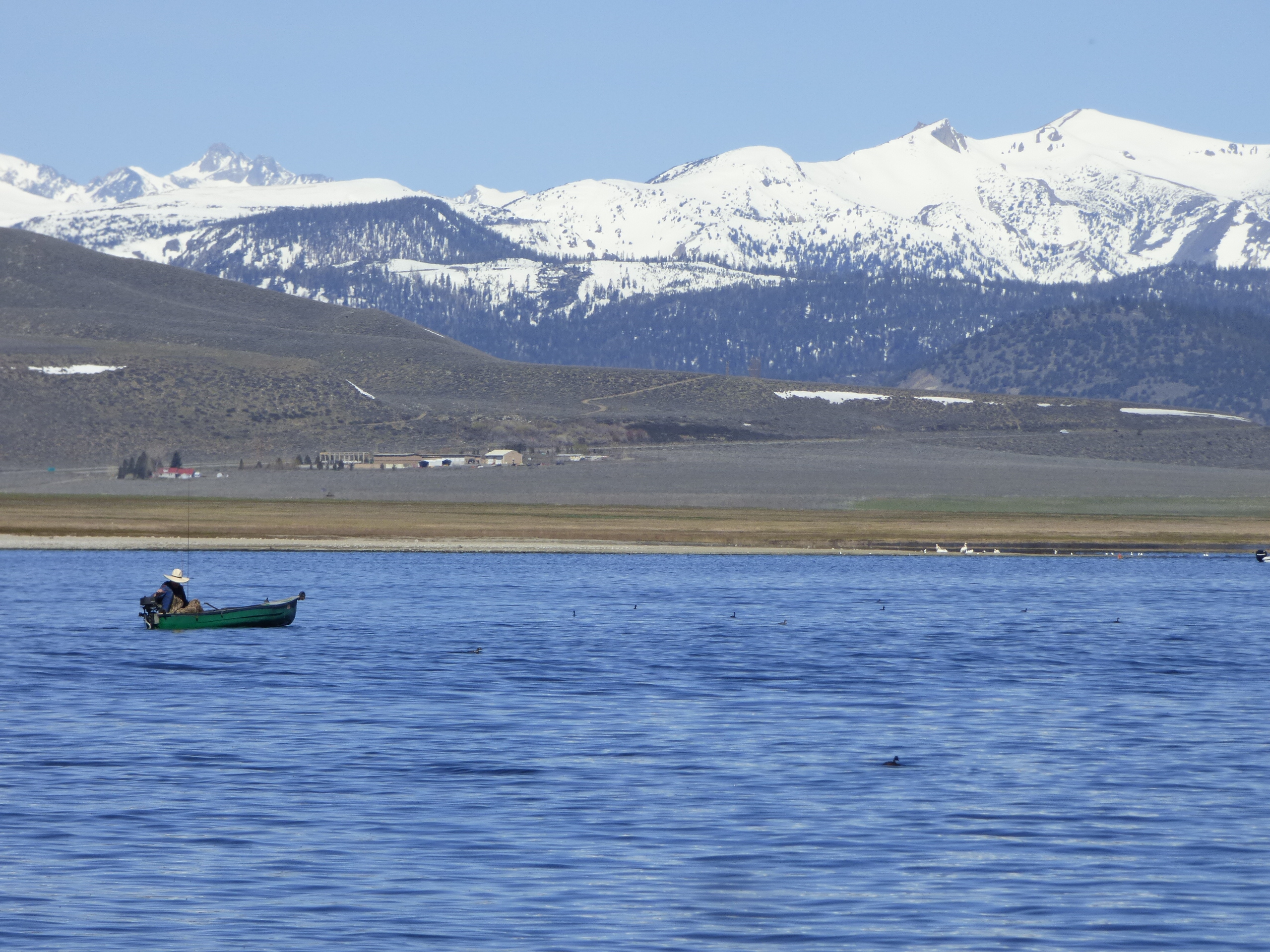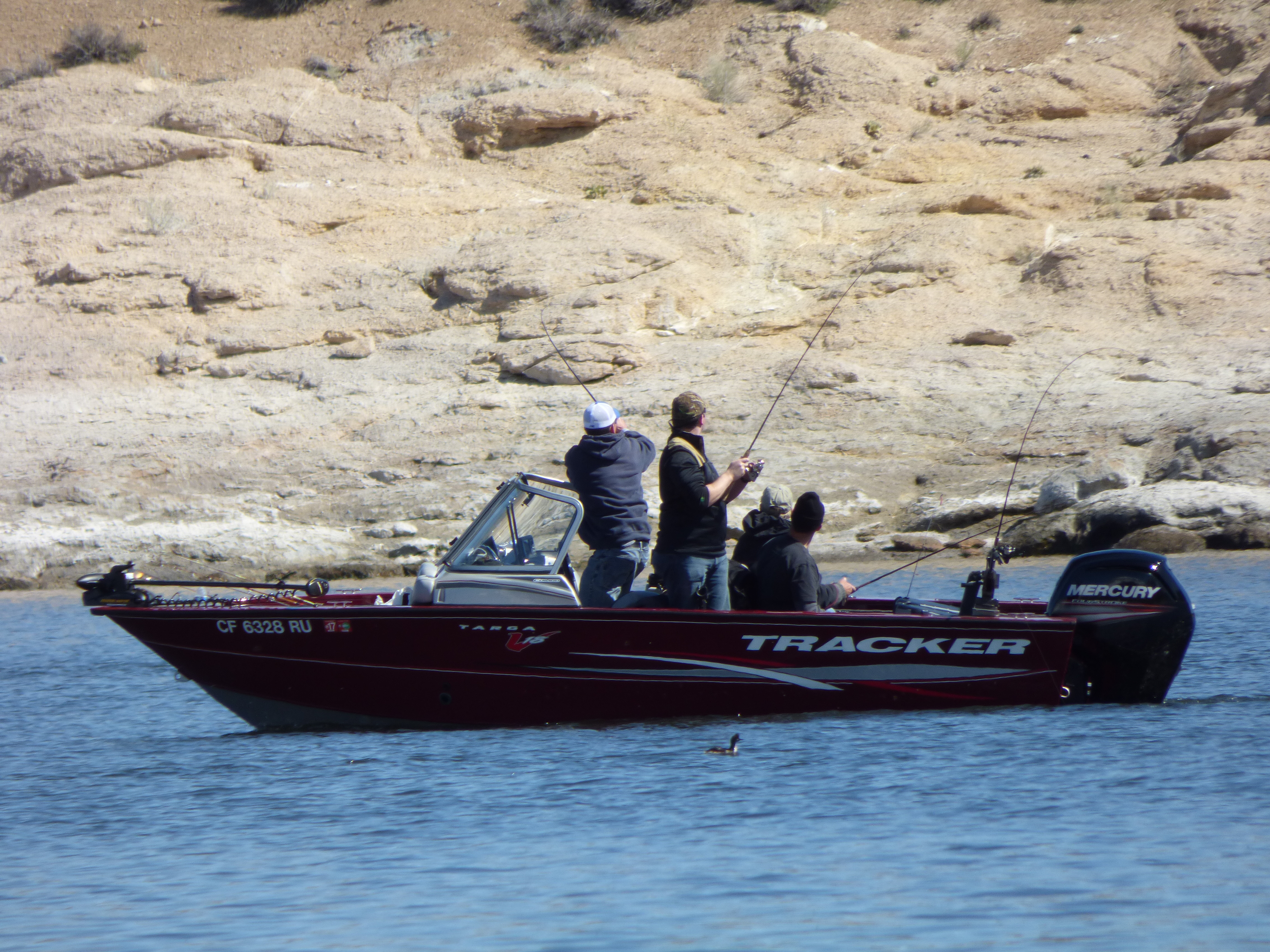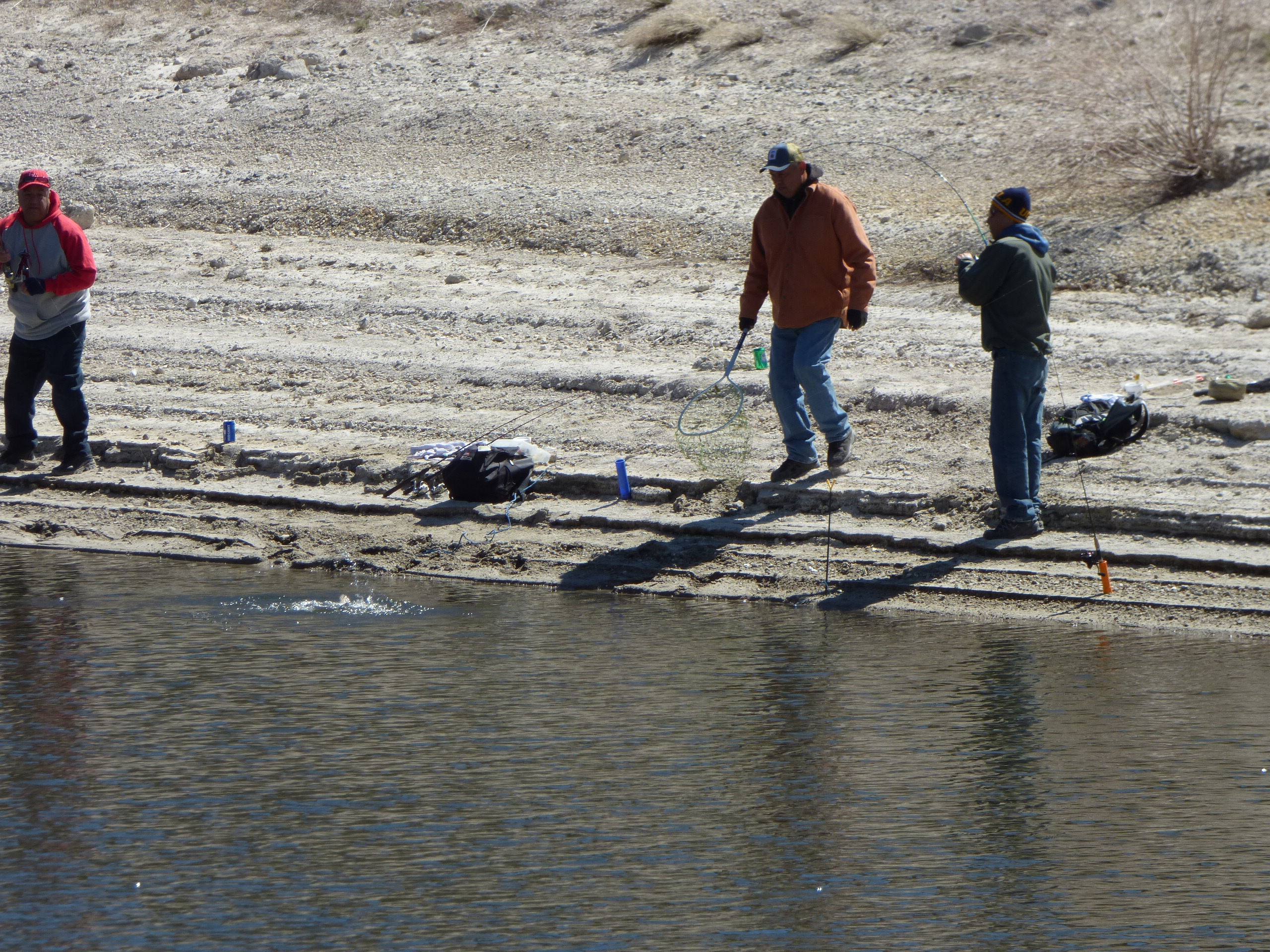Countdown To Trout Opener: ‘Fishmas’ Eve In Eastern Sierra

Saturday is the statewide general trout opener. Our April issue commerates “Fishmas Day” and we’ll count down with a story every day this week leading into Saturday’s opening day.
Today: Eastern Sierra overview with focus on Crowley Lake
By Mike Stevens
The last Saturday of April marks opening day of the Eastern Sierra general trout season, at which point every drop of rainbow-, cutthroat- and brown-holding water along the Highway 395 corridor can be legally fished.
Anglers from all over the state (and beyond) will flock to every fishable lake and creek from Lone Pine to Bridgeport, but the centerpiece of that spread is, without a doubt, Crowley Lake.
I have covered Crowley during each of the last half-dozen openers. Covered, as in reporting on and not fishing it. In doing so, I’ve walked the bank and talked to shore anglers, interviewed boaters when they’ve returned to the ramp, and chatted with both types at the fish cleaning station or over cups of coffee in the shelter of the Crowley Lake Fish Camp store.
Despite the wide range of environmental factors that have characterized each of those “Fishmas Day” events, I’ve seen consistent patterns of angler success emerge at this particular waterbody on opening day.
WHAT TO EXPECT ON APRIL 28
The biggest catches on opening weekend will likely be brown trout from one of the big lakes in the Bridgeport area, but I would bet Crowley yields more in the 4- to 7-pound range than anywhere else, as well as will sport a better variety of trout. The Crowley Fish Camp staff keeps a running record of each quality fish weighed in for the Fred J. Hall Memorial Opening Day Big Fish Contest, and it’s pretty consistent from one year to the next.
For one thing, the smallest fish that make the log are in the 2-pound range and there are pages of 3- to 5-pounders, along with whatever biggies get caught. Those are just fish that are reported, and based on the sheer number of anglers who hit Crowley on opening day, it’s likely that well under half that do hit the official scale.
If in my years of coverage there was a fish over 10 pounds caught, I don’t remember it, but everything that’s landed is quality. Up in Bridgeport, you can almost count on at least one double-digit brown being caught each opener, but beyond that it’s a lot of smaller stockers that are filling stringers.
CUTTS AT CROWLEY
Another thing you can bet on is that the logbook will be dominated by cutthroat trout. Crowley has an incredible population of cutts that have access to solid spawning habitat, including McGee Creek, the Owens River and some other smaller tributaries. The funny thing is, most of the shore anglers just think they are catching exceptionally awesome-looking rainbows. Rather, the fish are very much cutthroat, and this time of year at Crowley, most trout in the 5-pound class that aren’t browns are cutts. Rainbows that end up on stringers are typically in the 1- to 3-pound range.
IT’S A TROLLING THING
Trolling is a year-round go-to tactic at Crowley Lake, with opening day being no different. Throughout the summer there is a lot of leadcore lure dragging going on to get deeper, but that is not the case early in the season.
Almost every boater I ask – and it’s usually also marked in the log – is “top line” (or flat-line) trolling using monofilament line with regular gear. The only difference might be kicking line weights up a notch – maybe to 6-pound test – to handle more of an impact than if you were casting.
Top trolling lures are always the same (I don’t even have to look at my notes): minnow-imitating baits like Rapalas, Owner Cultiva and Berkley Flicker Shad, and metal stuff like Needlefish, Thomas Buoyants and Kastmasters. I don’t know what category Tasmanian Devils fit into, but they are absolute killers on the troll at Crowley.
Use a size or two bigger – on each of those – than you would reach for if you were casting, and experiment with trolling speeds and how far behind the boat the lures are positioned.
Anywhere on the lake can produce, so plan on covering some ground to find biters. Still, popular areas to troll off of include Chalk Cliffs, Alligator Point, Leighton Springs and Green Banks. You can find a map on crowleylakefishcamp
.com, and there are free printouts of it in the store at the lake.

ROOM TO FISH
Despite the unmatched angler traffic Crowley gets on this most popular day of days, the shoreline features miles of access, and you actually can escape the crowds if you’re willing to hoof it from areas bumper to bumper with RVs.
I will say this, though: sleep in. Cars will be lined up at the gate well before dawn, but every year without fail shore anglers give me the same story: “We got here first thing in the morning and we didn’t get any bites until 8 a.m.”
Yes, that’s give or take 45 minutes or so, but I’ve yet to hear of wide-open fishing for bank robbers at zero-dark-thirty. I don’t even show up until after 8 because getting there before many fish are caught doesn’t really accomplish anything. I mean, get out there early if that’s just how you do it, or if you want to maximize your time on the water, but by no means should you feel that you are missing some sort of “bite window” by enjoying your coffee and letting the main rush of vehicles pour in.
DON’T BANK ON ANYTHING
Here’s the part many will see as a bummer: It’s a bait-and-wait game from shore. I’d love to tell you that sight fishing for schools of trout with jigs or fan casting with Buoyants will get the job done, but for whatever reason, it’s not the way to go at Crowley on Fishmas. I run across a few here and there along the shore or in the logbook, but it’s less than 10 percent from what I’ve seen.
Using a sliding sinker or casting bubble rig with PowerBait, a nightcrawler or Berkley Mice Tail on the business end is money for rainbows, cutthroat and the odd brown that forgets he’s a brown. I have seen a guy limit in about 20 minutes using a fly-and-bubble set-up with a Woolly Bugger, while the rest of the cove he was in was enjoying a steady pick. But I also see him in the same spot every year, and it doesn’t always work for him.
The bottom line is, chuck lures here and there in case the trout are that aggressive, but plan on still-fishing to catch dinner. A two-rod stamp is the way to go if you aren’t the type who can just sit there with a rod propped between a couple rocks; send out the bait rig and huck lures while you wait. CS






